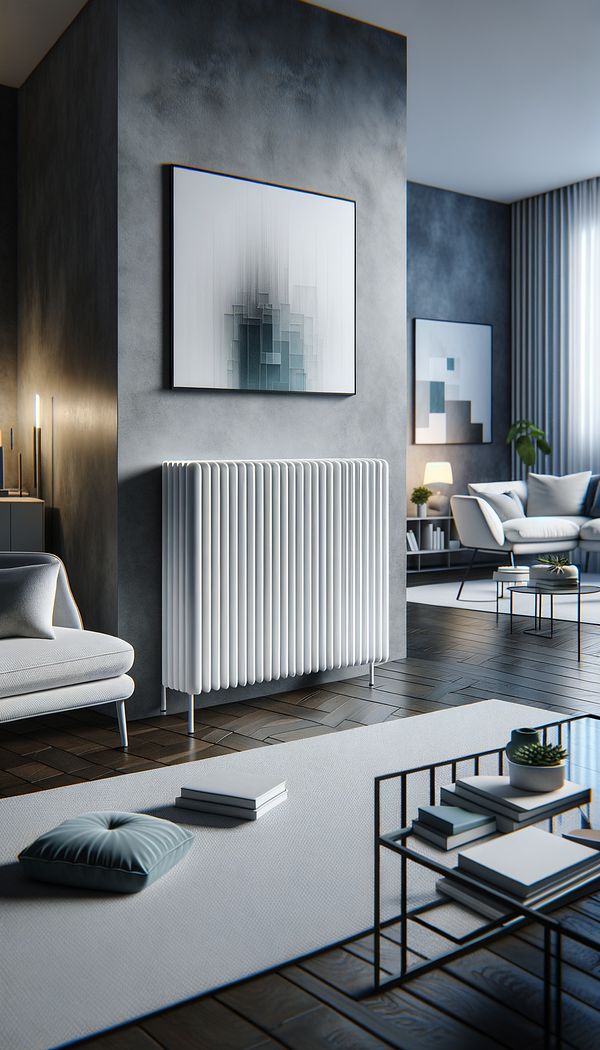What is a Radiator Cover?
A radiator cover is a protective decorative casing placed around a radiator.
Description
A radiator cover is essentially a shell that encapsulates a radiator, typically found in homes and buildings to provide heating. These covers serve both a functional and aesthetic purpose. On the functional side, they help to protect people, especially children, from accidentally burning themselves on the hot surface of the radiator. They also can aid in directing the flow of heat into a room, making the heating system more efficient. Aesthetically, radiator covers can hide the often unattractive appearance of traditional radiators, integrating them better into the overall design style of a room.
Manufacturers offer a variety of styles, from minimalist and modern to ornate and traditional, catering to a wide range of interior design preferences. Custom-design options are also available for those looking for a specific match to their decorative objects or architecture elements. Materials commonly used for radiator covers include wood, metal, and MDF (Medium Density Fiberboard), each providing different looks and thermal efficiency properties.
Furthermore, some radiator covers are designed with additional functionality in mind, such as built in shelves or storage spaces. This allows for a smart utilization of the area above and around the radiator, often turning a purely functional piece into part of the décor. This alignment of function and form is a central philosophy in interior design, making radiator covers a useful tool in the designer's palette.
Usage
In a living room with a rustic design style, a custom wooden radiator cover that complements the surrounding furniture and décor can be used not only as a safety feature but also as an additional surface for decorative items. For a more contemporary setting, a sleek, metal radiator cover with a minimalistic design can provide both the necessary protection and an aesthetic that aligns with the modern theme of the space.
FAQs
-
Are radiator covers safe?
Yes, when designed and installed properly, radiator covers are safe and can actually make radiators safer by preventing direct contact with their hot surfaces. It's important to ensure appropriate ventilation to allow heat to circulate efficiently.
-
Do radiator covers reduce heating efficiency?
If not correctly designed, radiator covers can sometimes restrict airflow and absorb heat, reducing the efficiency of the heating system. However, well-designed covers with proper ventilation can direct the flow of heat more effectively into a room, improving overall efficiency.
-
Can radiator covers be customized?
Absolutely, radiator covers can be customized to match specific design styles, materials, or dimensions. Custom radiator covers can be a perfect solution for integrating heating elements into the interior design seamlessly.
-
What materials are radiator covers made from?
Radiator covers can be made from various materials, including wood, metal, and MDF. Each material offers different aesthetic and thermal efficiency qualities, making them suitable for different design styles and preferences.
Practical Application
When selecting or designing a radiator cover, consider the overall design style of the space and the material that would best complement it. Ensure the cover allows for sufficient airflow to maintain heating efficiency. Consider additional features such as built in shelves for extra functionality. Finally, remember that customization options are available to perfectly align the cover with your design preferences and requirements.
-
Architectural Elements199 articles
-
Design Styles478 articles
-
Furniture Types599 articles
-
Decorative Objects240 articles
-
Materials & Textiles360 articles
-
Wrap GroupWrap Group refers to a methodology of grouping furniture and decor items to create a cohesive and visually appealing arrangement.
-
Straight-Back SofaA straight-back sofa is a couch with a flat, upright backrest.
-
HerringboneHerringbone refers to a distinctive V-shaped weaving or tiling pattern.
-
CockbeadingCockbeading is a decorative moulding used in fine cabinetry.
-
Sleeper SofaA sofa that converts into a bed.
